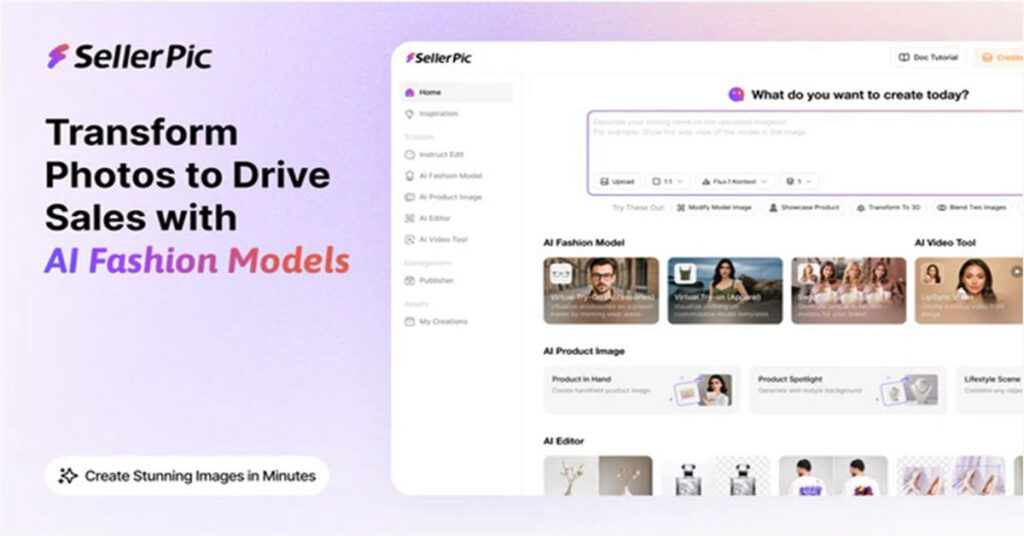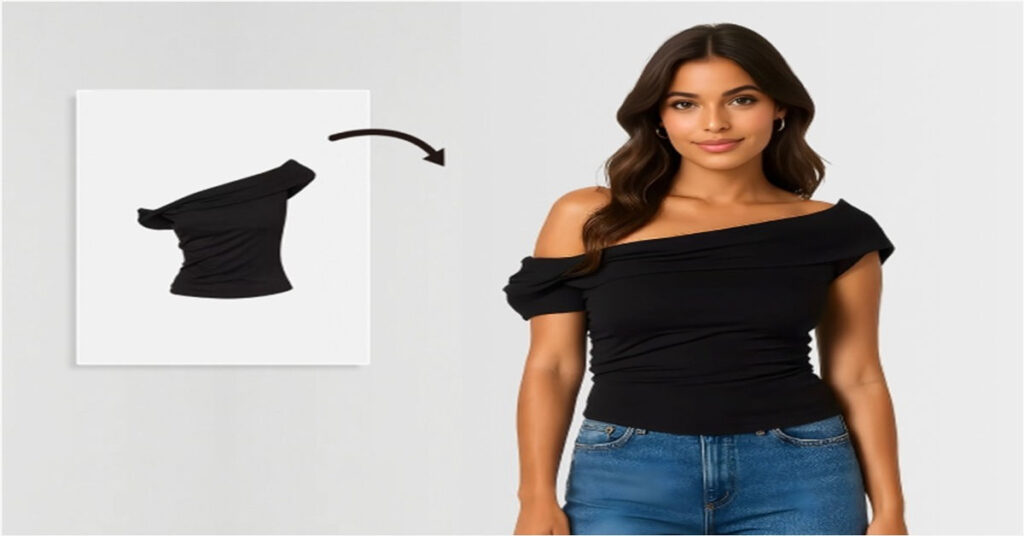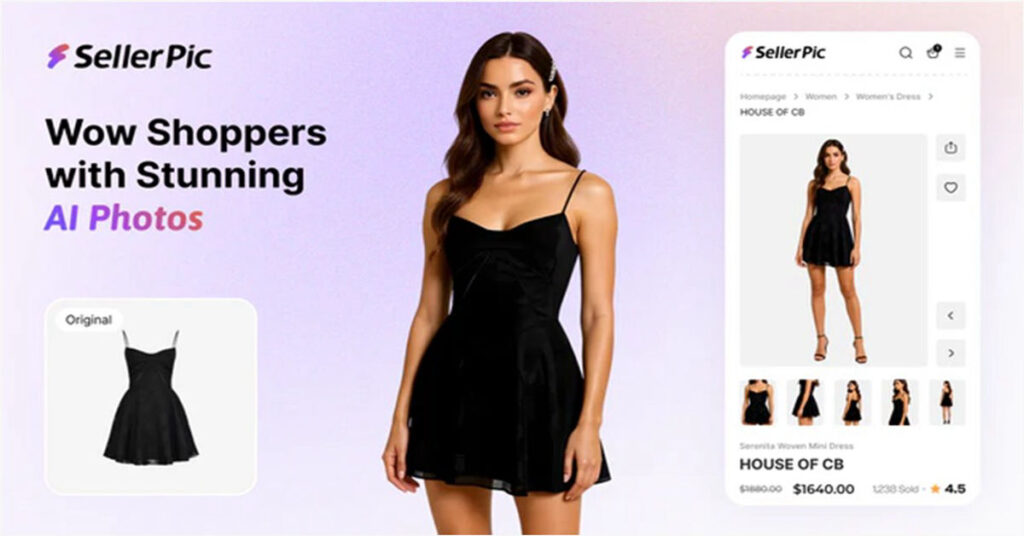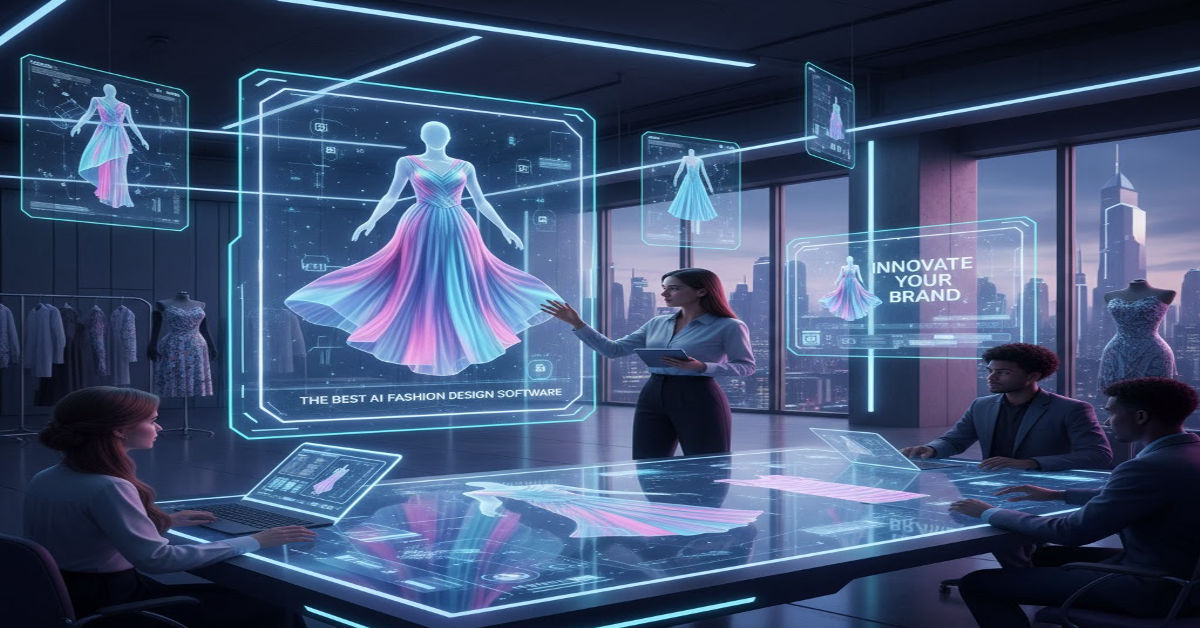The fashion industry experiences unprecedented digital transformation. AI fashion design software emerges as the catalyst driving this evolution. These intelligent tools empower designers, creative directors, and fashion brands to transition from concept to collection with remarkable speed and precision.
The global AI in fashion market reached $2.92 billion in 2025 and projects explosive growth with a 40.8% CAGR through 2035. This surge reflects how fashion professionals increasingly adopt AI to automate routine tasks, generate original designs, and predict consumer trends.
Fashion brands utilizing AI-powered design tools report 60% faster design cycles and 40% reduction in production costs. These statistics demonstrate why independent creators and global fashion houses alike embrace AI innovation to streamline workflows while maintaining creative authenticity.
What Does AI Fashion Design Software Do?

AI fashion design software revolutionizes creative workflows through machine learning, computer vision, and predictive analytics. These platforms transform how designers approach every stage of fashion development.
Modern AI tools generate clothing designs from simple text prompts or rough sketches. They suggest harmonious color palettes and recommend fabric combinations based on trend data. Advanced platforms predict upcoming fashion movements using real-time social media analysis and historical pattern recognition.
The technology creates photorealistic 3D garment prototypes without physical sampling. AI automatically generates size variants and technical specifications. It digitally recolors existing pieces and accelerates tech pack creation for production teams.
Key AI Fashion Design Capabilities:
- Design Generation: Transform text descriptions into visual concepts
- Trend Forecasting: Analyze global data to predict consumer preferences
- 3D Prototyping: Visualize garments before physical production
- Pattern Creation: Automate technical drawing and grading processes
- Color Optimization: Test infinite color combinations digitally
Some platforms focus on ideation and concept generation. Others support prototyping, marketing, or production workflows. The most effective solutions integrate multiple features to deliver comprehensive fashion creation ecosystems.
For enhanced product visualization, SellerPic serves as an exceptional AI fashion design software. This tool refines product images, creates professional model shots, and generates marketing videos with artificial intelligence. Fashion brands leverage SellerPic to transform basic product photos into compelling ecommerce visuals.
Best AI Fashion Design Software Tools in 2025

The AI fashion design landscape offers diverse platforms tailored to specific creative needs. Each tool addresses different aspects of the design-to-market pipeline.
Sellerpic
Best for: AI-powered fashion visualization, model generation, and ecommerce content creation
SellerPic revolutionizes fashion imagery production with advanced AI photo editing and model generation tools. The platform enables brands to visualize clothing on digital models, change outfits, and recolor garments instantly eliminating the need for costly photoshoots. Fashion teams cut content production time by up to 80% while achieving studio-quality visuals.
Top Features:
- AI clothes changer and outfit visualization
- Virtual model generation with diverse body types
- Smart background removal and photo enhancement
- Batch editing for large-scale product catalogs
Ecommerce-ready content export for marketplaces and DTC sites
SellerPic integrates effortlessly into existing fashion workflows. Designers, marketers, and ecommerce teams can prototype visuals, test product variations, and publish campaign-ready images in minutes using SellerPic’s comprehensive AI toolkit.
Heuritech
Best for: Trend forecasting using predictive AI analytics
Heuritech specializes in fashion trend prediction through comprehensive data analysis. The platform processes millions of social media images and runway data to identify emerging trends 6-18 months before mainstream adoption.
Top Features:
- Real-time trend prediction dashboards
- Consumer behavior analysis and insights
- Market demand forecasting tools
- Competitive intelligence reporting
Fashion brands using Heuritech achieve 35% higher sell-through rates by aligning collections with predicted consumer preferences . The platform transforms trend research from intuition-based to data-driven decision making.
Benefits of Using AI Fashion Design Software
AI fashion design software delivers measurable improvements across creative and business metrics. These tools reshape how fashion professionals approach design challenges.
| Benefit | Impact | Statistical Improvement |
| Faster Design Cycles | Reduce concept-to-sample timelines | 60% time reduction |
| Lower Production Costs | Minimize physical sampling expenses | 40% cost savings |
| Enhanced Creativity | Generate unlimited design variations | 300% more concepts explored |
| Smarter Decisions | Data-driven trend alignment | 35% higher sell-through rates |
| Sustainability | Reduce material waste through digital validation | 50% less physical sampling |
| Scalable Workflows | Produce multiple variations simultaneously | 5x design output capacity |
The fashion design software market grows at 10.5% CAGR, reaching $3.96 billion by 2034. This expansion reflects widespread industry adoption and proven ROI from AI implementation.
Fashion brands report significant productivity gains from AI adoption. Design teams complete projects 60% faster while exploring more creative possibilities. The technology eliminates repetitive tasks, allowing designers to focus on strategic creative decisions.
How AI Enhances Every Stage of Fashion Design

AI integration transforms each phase of fashion development. The technology amplifies human creativity rather than replacing designer expertise.
Ideation & Concept Development
AI generates fresh design concepts based on trend analysis and style preferences. Designers input inspiration references or descriptive prompts to receive visual proposals instantly. The technology explores style combinations that human designers might overlook.
Machine learning algorithms analyze successful designs to suggest new silhouettes and proportions. This process accelerates brainstorming while maintaining creative authenticity. Teams generate 300% more initial concepts using AI-assisted ideation.
Design & Sketching
Text-to-image and sketch-to-sketch tools convert rough ideas into polished technical drawings. AI refines initial sketches, adds construction details, and creates multiple style variations. These designs integrate seamlessly with traditional CAD workflows.
Advanced platforms generate technical flats, construction details, and specification sheets automatically. Designers focus on creative direction while AI handles technical documentation. This division of labor improves both creativity and accuracy.
Prototyping
AI-powered 3D simulation eliminates multiple physical sampling rounds. Designers visualize fabric drape, fit, and movement before cutting materials. The technology tests different fabric weights, textures, and stretch properties digitally.
Virtual prototyping reduces sampling costs by 50% while accelerating development timelines. Teams iterate designs rapidly without material waste or production delays. This approach supports sustainable fashion practices through reduced resource consumption.
Trend Validation
Platforms like Heuritech validate design concepts against predictive market data. AI analyzes consumer behavior patterns to forecast demand for specific styles, colors, and silhouettes. This intelligence guides collection development decisions.
Brands using AI trend validation achieve 35% higher sell-through rates compared to intuition-based approaches. The technology transforms trend research from subjective interpretation to objective data analysis.
Marketing & Launch
AI generates diverse marketing content from single product images. Platforms create lifestyle shots, model photography, and social media content automatically. This capability reduces marketing production costs while maintaining visual consistency.
SellerPic excels in this phase by transforming basic product photos into professional marketing assets. The AI photo editor creates model shots, lifestyle scenes, and promotional videos without expensive photoshoots. Fashion brands leverage SellerPic to scale content production while maintaining high visual standards.
Who Should Use AI Fashion Design Software?

AI fashion design tools serve diverse users across the modern fashion ecosystem. These platforms offer accessible pricing, intuitive interfaces, and scalable capabilities suitable for different skill levels and business types.
Independent Designers
Independent designers benefit from AI’s power to scale creative output without expanding team size.
- Generate multiple collection concepts quickly
- Test color variations and fabric combinations
- Create marketing visuals efficiently
AI tools bridge the gap between solo creators and large design houses by offering professional-grade design automation.
Fashion Students
AI enables fashion students to experiment and learn rapidly.
- Instant feedback on design iterations
- Unlimited creative experimentation
- Development of technical and artistic skills
These tools transform traditional design education into interactive, tech-driven learning experiences.
Ecommerce Teams
Ecommerce professionals use AI to generate consistent product visuals across various colorways and styles.
- Replace costly photoshoots with automated imagery
- Create seasonal campaigns quickly
- Maintain brand consistency across marketplaces
AI ensures speed, accuracy, and scalability in digital fashion presentation.
Creative Agencies
Agencies managing multiple fashion clients use AI to streamline project delivery.
- Produce diverse design concepts rapidly
- Customize aesthetics for different brands
- Support fast prototyping and concept validation
This agility enhances client satisfaction and strengthens competitive advantage.
Sustainable Fashion Brands
Sustainability-focused brands leverage AI to reduce environmental impact.
- Validate designs digitally before production
- Minimize material waste and carbon emissions
- Support circular fashion practices through digital workflows
AI contributes to eco-friendly innovation and responsible design evolution.
Industry Insight
While 74% of fashion companies struggle with AI adoption beyond proof-of-concept stages, those who integrate it successfully report dramatic gains in efficiency, creativity, and competitiveness.
Challenges and Considerations When Using AI in Fashion Design

AI fashion design software offers groundbreaking potential but also introduces critical challenges. Recognizing these limitations helps designers implement tools effectively while maintaining creative integrity.
Authenticity Concerns
AI often generates designs based on existing data patterns, raising questions about originality. Designers risk producing derivative work that lacks personal creative identity. The most effective approach uses AI to enhance, not replace, human creativity.
Data Bias Issues
AI training models can reflect Western or mainstream fashion aesthetics, leading to limited representation of diverse cultural styles. To promote inclusivity, designers must curate balanced datasets and ensure global creative diversity in AI inputs.
Technical Learning Curves
Integrating AI with tools like CLO 3D, Adobe Illustrator, or pattern-making systems requires time and training. Teams should allocate adaptation periods and technical support to fully leverage AI capabilities.
Intellectual Property Questions
AI-generated designs raise ownership and copyright concerns since outputs may derive from training data. Fashion brands should review platform terms and consult legal experts to clarify rights before commercial use.
Quality Control Requirements
AI outputs often require manual refinement to ensure production accuracy and manufacturability. Human oversight remains vital to verify technical details and maintain brand standards.
Conclusion
Despite these challenges, AI fashion design software remains a transformative innovation. When used with creative direction, ethical consideration, and critical evaluation, AI can amplify originality—serving as a creative assistant, not a replacement for human expertise.
Final Thoughts
The future of fashion design embraces digital innovation with AI leading the transformation. Fashion professionals who adopt AI-powered tools gain competitive advantages through faster workflows, smarter decisions, and enhanced creative possibilities.
From generating initial sketches to launching ecommerce campaigns, AI tools unlock powerful innovation opportunities. Fashion brands reduce time-to-market by 60% while exploring 300% more creative concepts. These improvements translate directly to competitive advantage and business growth.
SellerPic exemplifies how AI enhances fashion marketing through intelligent photo editing and content creation. The platform transforms basic product images into professional marketing assets, supporting brands throughout the design-to-sale journey.
As AI technology evolves, its role in fashion will expand further. Early adopters position themselves advantageously for continued industry transformation. The time to explore AI’s potential for your fashion brand is now.
FAQs
What is AI fashion design software?
AI fashion design software uses artificial intelligence to assist in clothing creation through automated sketching, pattern generation, color testing, and 3D garment visualization. These tools combine machine learning with creative workflows to accelerate design processes and reduce production costs.
How does AI fashion design software benefit designers?
AI software enables 60% faster design cycles and up to 40% cost reduction by automating repetitive tasks and enabling digital prototyping. Designers can explore up to 300% more creative ideas while focusing on innovation and brand identity.
Can AI fashion design software replace human creativity?
No. AI enhances rather than replaces human creativity. It acts as an intelligent assistant, generating ideas, handling technical work, and offering data insights—while designers provide emotional depth, storytelling, and creative direction.
Who can use AI fashion design software?
Independent designers, fashion students, eCommerce teams, creative agencies, and sustainable fashion brands all benefit from AI tools. Modern platforms feature affordable pricing and user-friendly interfaces, making them suitable for users at all skill levels.
What are the main challenges of using AI in fashion design?
Challenges include preserving creative authenticity, addressing AI data bias, managing learning curves, ensuring intellectual property compliance, and maintaining design quality control. Effective use requires human oversight and strategic planning.
How much does AI fashion design software cost?
Pricing ranges from free tools like SellerPic for AI-powered design editing to enterprise-level solutions costing $500–$5000+ per month. Most platforms offer tiered plans based on features, usage, and business scale.







